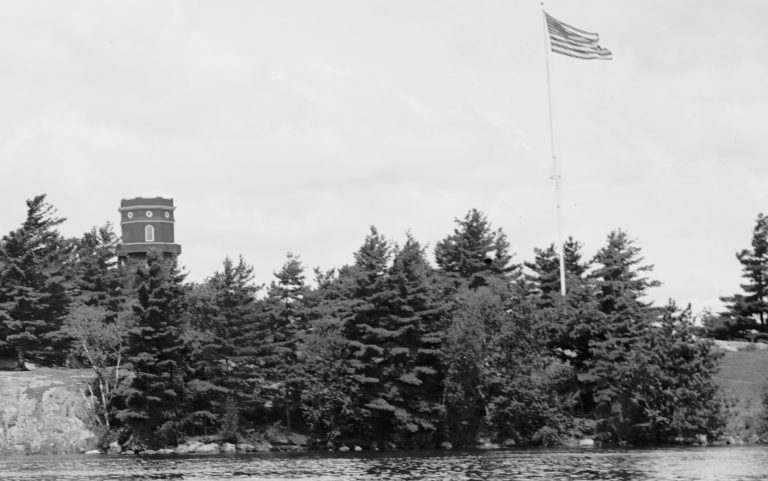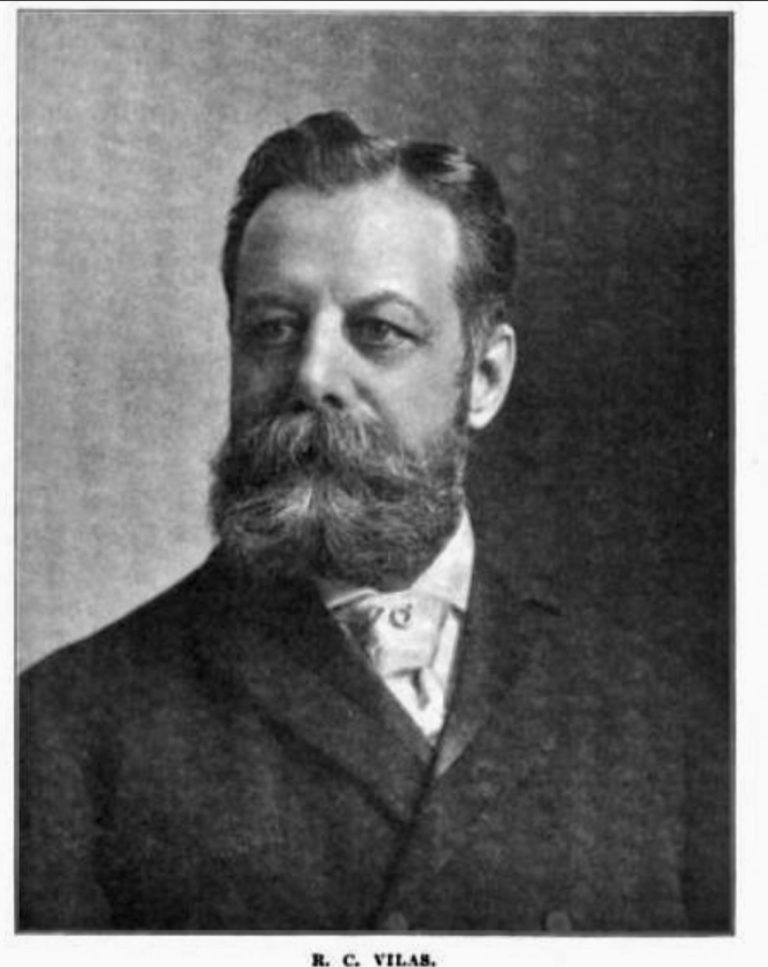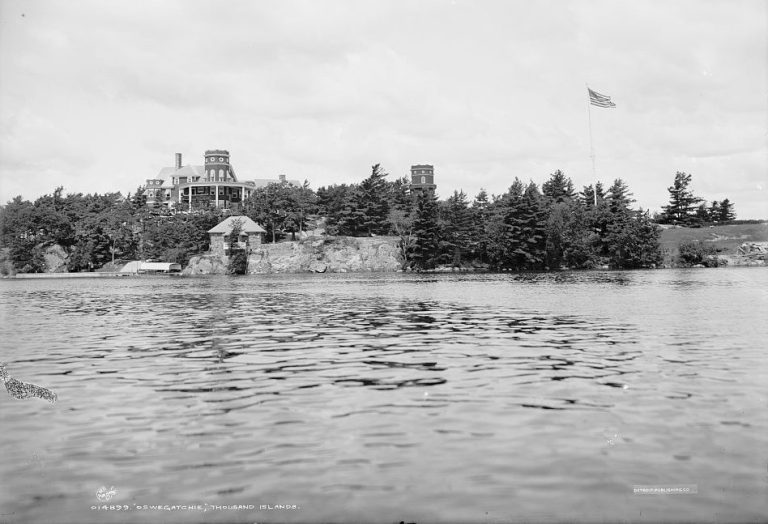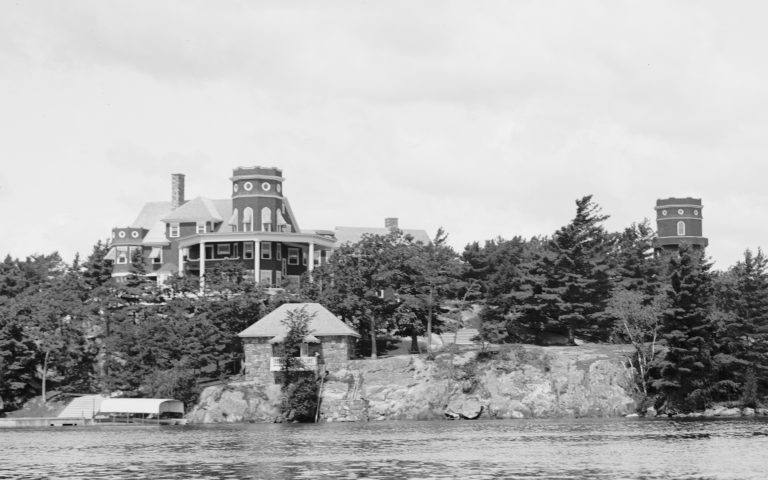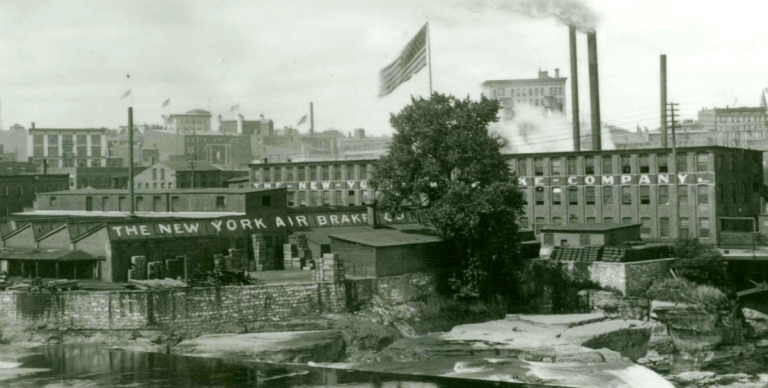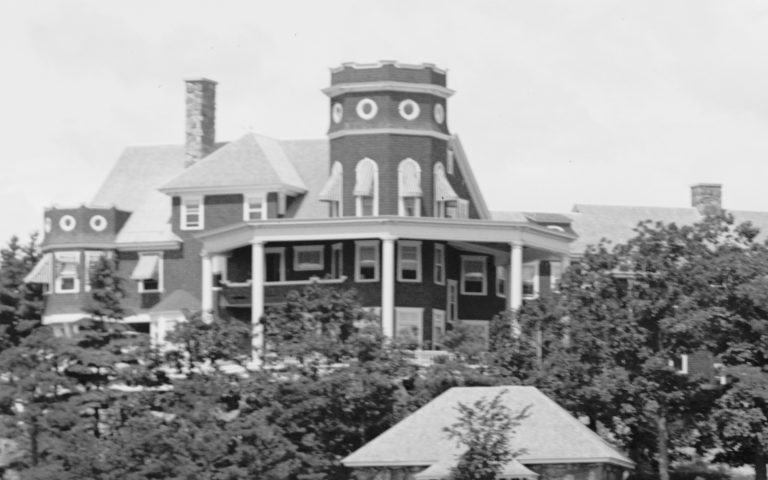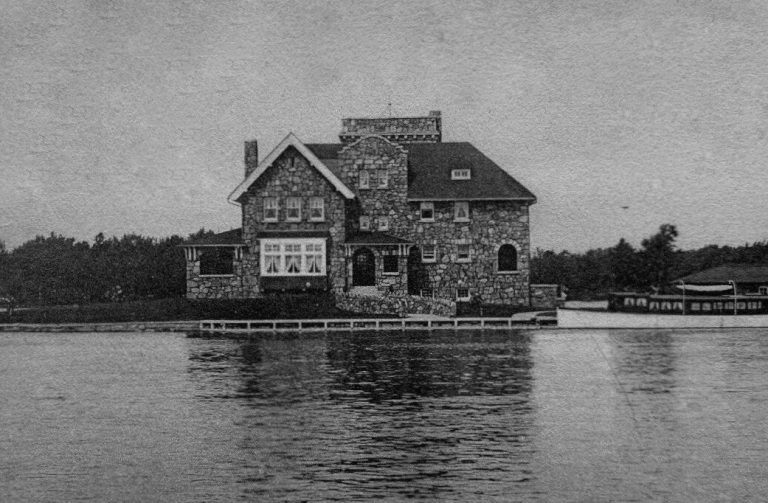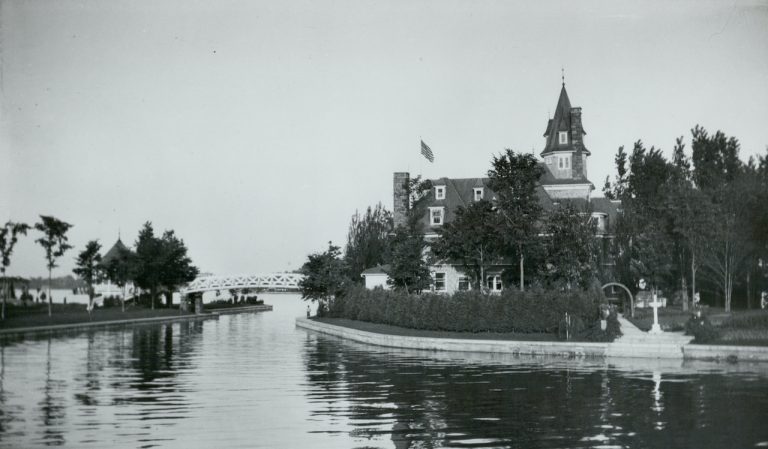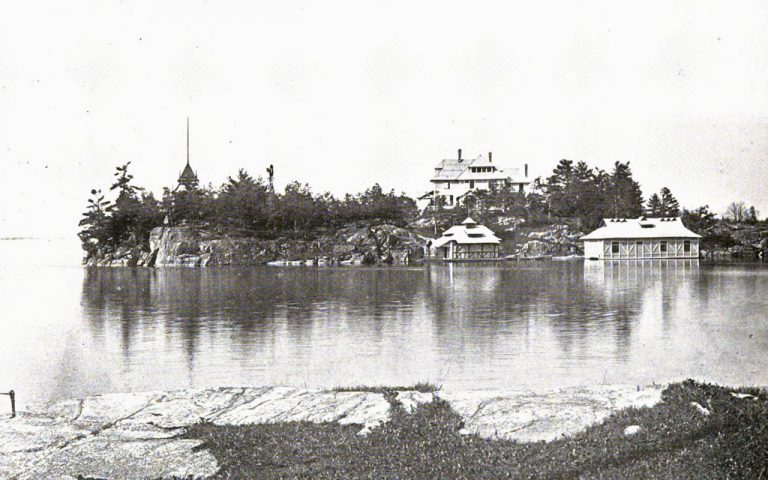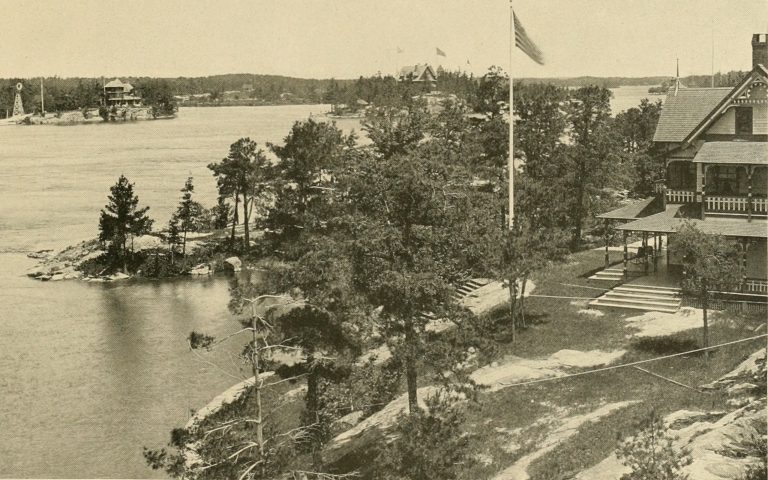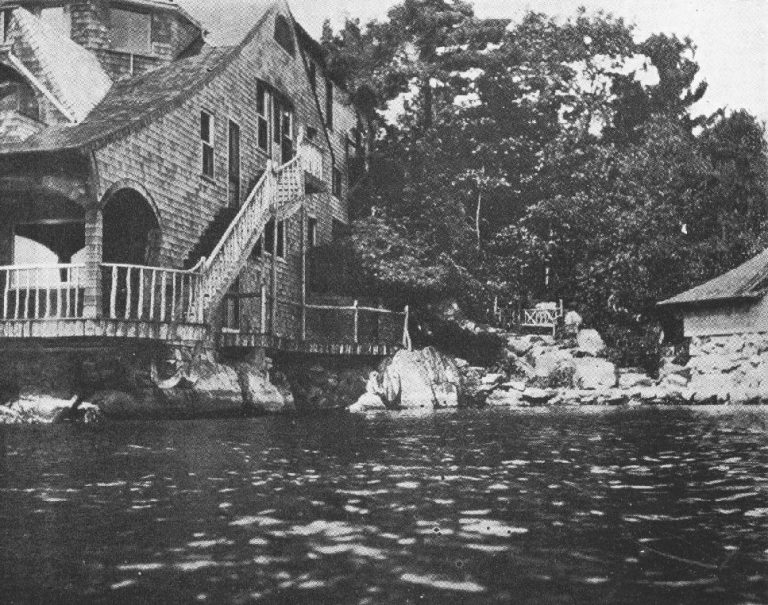Former Ogdensburg Native and New York Air Brake President Royal C. Vilas Builds Mansion At “Oswegatchie Point” On Wellesley Island In 1901
Born in Ogdensburg, N.Y., on November 19, 1842, Royal C. Vilas rose to lofty heights, constructing Oswegatchie Point, a reportedly 50-room mansion completed in 1902 on Wellesley Island across from Point Vivian only a year and a half before his untimely death in 1903 at the age of 61 due to pneumonia. A son of Royal Vilas, a prominent shoe merchant in Ogdensburg, the young Royal, whose firstborn also bore the same name, headed west in 1862 and began a very profitable career in railroading.
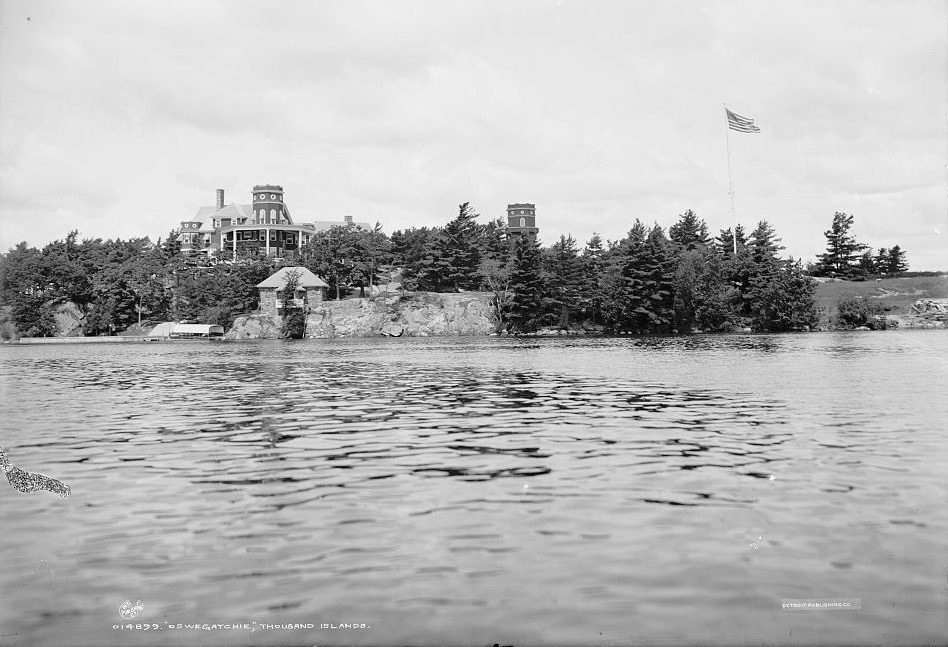
During those early years, Royal lived in Cleveland and worked as a clerk in a Freight-clearing house. He shortly thereafter worked in the General Freight office of Erie Railroad, in New York City, as a general claim agent before leaving the position less than a year into the job to return to Cleveland and take charge of the Freight-clearing house he had left.
Flash forward to 1888, when a then 46-year-old Royal C. Vilas became interested in the Watertown, N.Y. company, Eames Vacuum Brake. Vilas and John C. Thompson turned Eames on the city’s Beebee Island, just off of its Public Square, into the formidable New York Air Brake company. The Air Brake’s three primaries, John C. Thompson, Royal C. Vilas, and Charles A, Starbuck, were the company’s principals, each serving in various positions, including President, over the course of its early years, with its headquarters in New York City.
All three principals also formed the Electric Railway in both Watertown and Staten Island, under the firm of John C. Thompson & Co., in 1892 (the Electric Railway was merely the trolley car.) There are different time frames when Royal C. Vilas left the New York Air Brake, one stating 1895, but advertisements in 1900 publications listed him as President at the time. Nevertheless, in 1900, Vilas filed a complaint to the courts in Illinois asking for John C. Thompson & Co. to be investigated and that its accounting wasn’t properly accounted for.
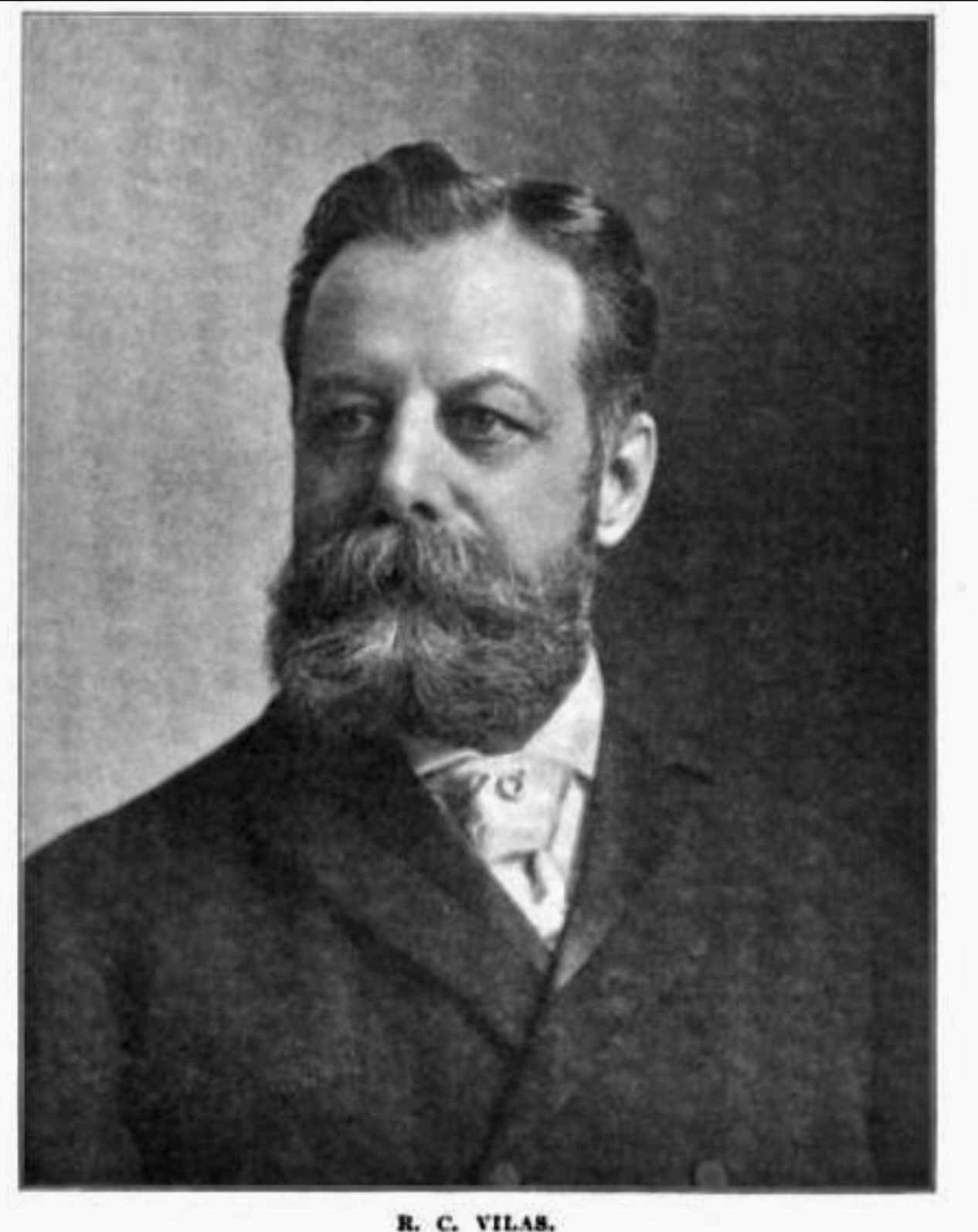
As part of the complaint, Silas stated he had invested $30,000 into the business in 1892, a sum that Charles A. Starbuck was to have matched. One can only infer Vilas believed this never happened. Vilas also stated that, upon concluding the accounting investigation, he wanted the partnership dissolved.
The Successful American, Vol. 3-4, Part 1, published in 1900, noted Royal C. Vilas’ success as the President of the Pyle-National Electric Headlight Company–
Perhaps no invention which has come to the front within recent years has forged to the front with more remarkable rapidity than has the Pyle-National Electric Headlight, owing to its inherent merits. It is one of those devices which tells its own story at a glance, and needs no laudation of its utility and excellence.
Much of the success of the headlight is due to Mr. Royal C. Vilas, the president of the Company. In taking hold of the device, Mr. Vilas had two prime requisites of the device. The first of these was a profound and enthusiastic belief in the merits of the electric headlight. The second was a broad experience with railway affairs and railway men.
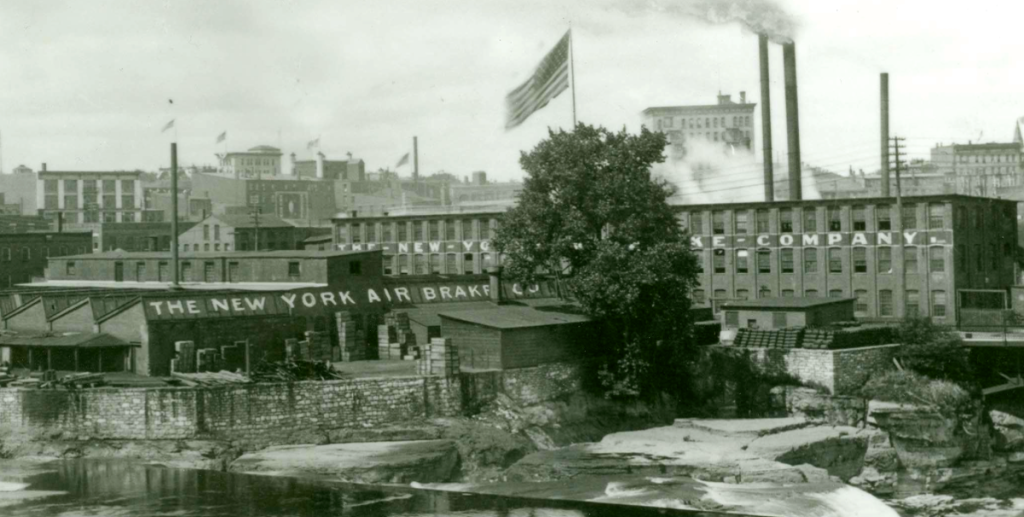
The following year, Royal C. Vilas traveled to Alexandria Bay and stayed at the Crossmon House, which he often frequented on his trips back home, and made plans to purchase approximately 12 acres on Wellesley Island to build a large mansion he would name Oswegatchie Point after the river that ran through his home town of Ogdensburg.
According to the Ogdensburg Journal’s July 23, 1901 edition, Williams & Johnston, architects of that city, were drawing up plans for the new cottage on 12 acres of land recently purchased from Royal E. Deane and Hiram Houghton. The September 12, 1901 Ogdensburg Advance and St. Lawrence Weekly Democrat gave a long description of Oswegatchie Point, some of which included, in part–
From the inlet where is to be built the steamboat dock a natural valley runs back forming several magnificent terraces up to the hight point upon which the house is to be located. The building will face the river, with an octagonal piazza overhanging the bluff and supported from the shore on rustic stone piers and stone arches. It will be twenty feet wide and follow half way around the octagonal tower at the southeast corner of main part of the building. The tower will be about 90 feet high above water level. An open promenade connects the piazza with another piazza 20 x 40 feet on the west side of main building, looking toward Clayton.
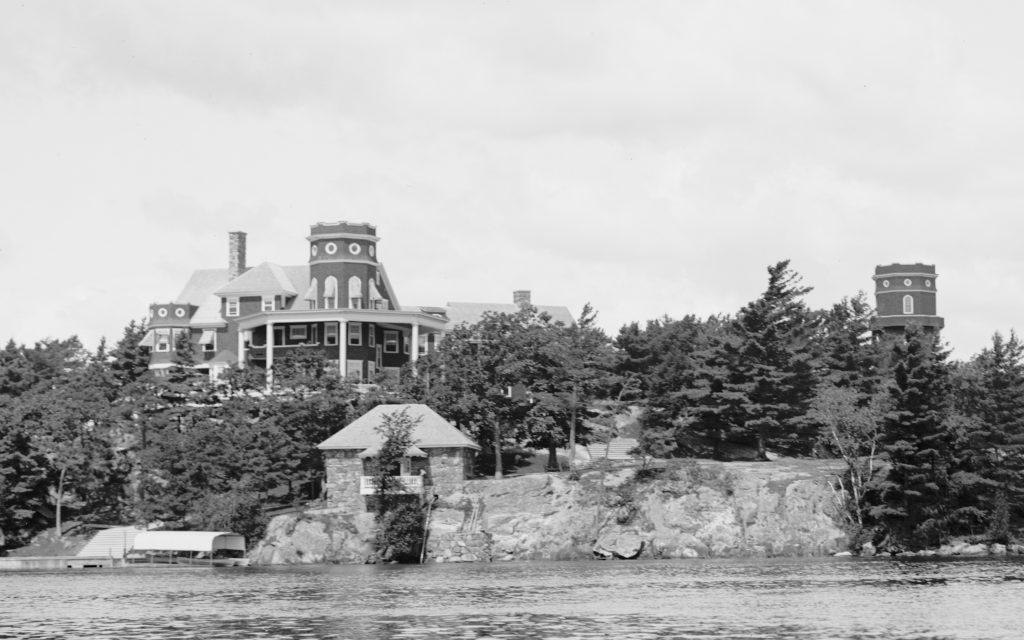
The entire front of the new building 24 x 42 feet is occupied by one large room intended as a living room, and forming the heart of the house.Entering the living room at the front through a broad doorway flanked with leaded glass windows, one sees the main stairway on the right which has broad windings with easy landings and balconies at the turns, also seats.
The foot of the stairway starts from the octagonal tower, from which broad windows afford views from five different directions overlooking land and river.
The general architecture of the building is colonial, finished with natural wood interior finish, hardwood floors, heavy wainscottings and timbered ceilings.The roof of the piazza is supported on colonial columns approximately two feet in diameter, two stories high, with carved caps.The house will contain heating apparatus, up-to-date plumbing outfit and be lighted by gas and electricity.
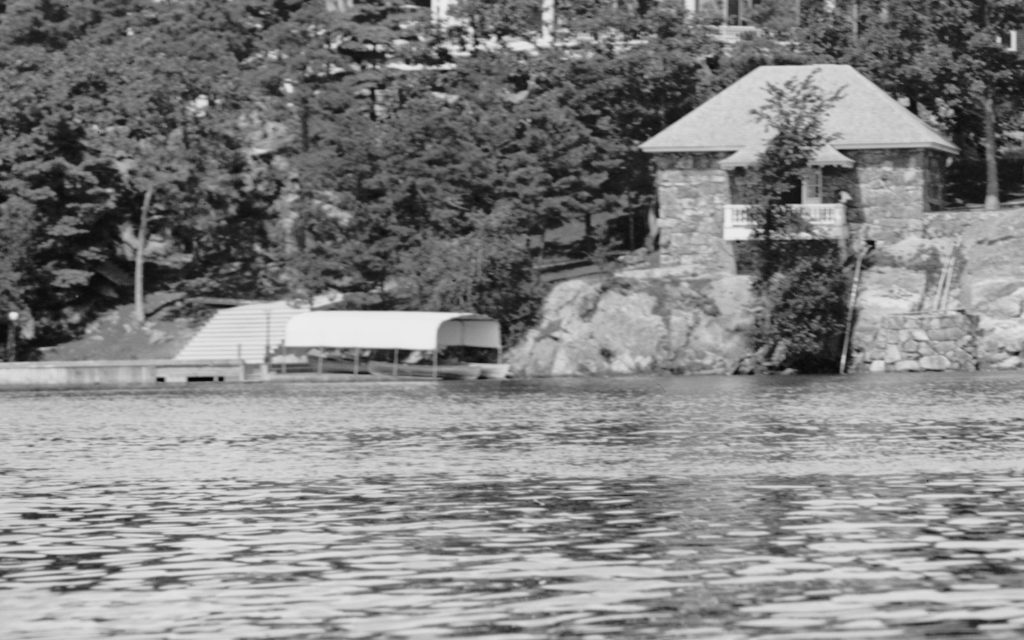
As mentioned, Royal C. Vilas passed away only a year and a half after Oswegatchie Point was completed. At the time of his death, he was President and Treasurer of the National Pyle Electric Headlight Co. of Chicago, Illinois, the leading manufacturer of railroad headlights.
Royal’s widow, Carrie A. Ward Vilas, and children, notably Royal, continued ownership. Also of note, Eleanor Ward Vilas married Andrew F. W. McNally, son of Rand McNally founder Andrew McNally. Eleanor and Andrew’s child, Andrew McNally III, was able to spend summers at Oswegatchie Point during his childhood summers. If there’s a quiz on this later, don’t worry, the answer is Andrew McNally.
While the younger Royal C. Vilas managed to have some success of his own, including passing the name down to his son who went on to become vice president and director of Pyle-National Co., he also had money problems which led him to take his life on June 9, 1932. Unfortunately, this inevitably led to Oswegatchie Point’s eventual razing in 1936.
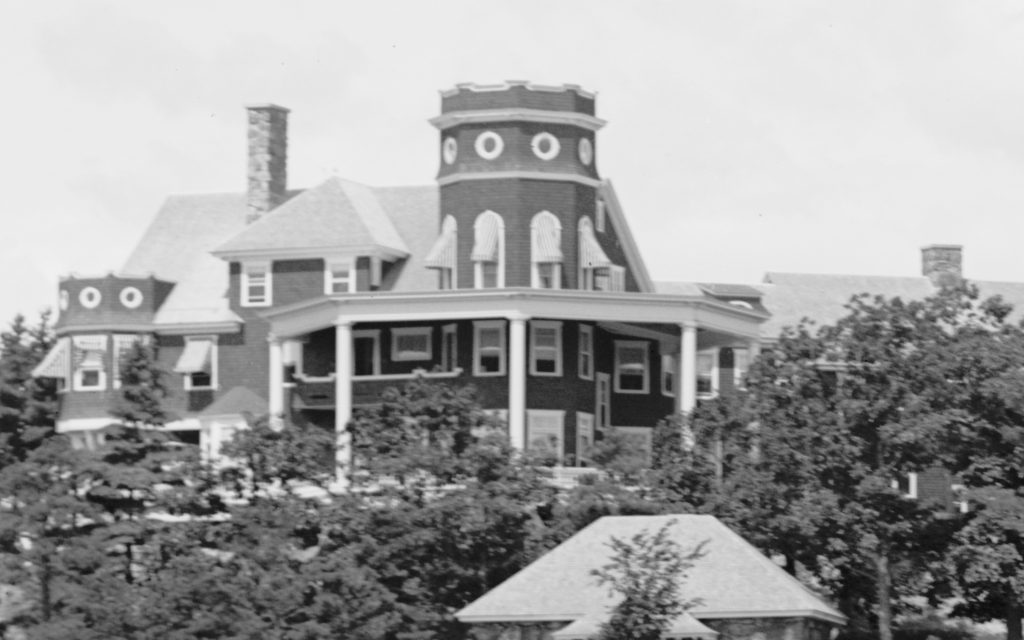
On August 28, 1936, the Watertown Daily Times reported, in part–
$75,000 Summer Estate Is Sold
Oswegatchie Point and Mansion In Deal
Property Will Be Razed
Oswegatchie Point, consisting of 15 acres and the $75,000 50-room summer mansion of the late R. C. Vilas, once Chicago headlight manufacturer and millionaire, has just been sold by the Vilas estate to Abe Cooper, Syracuse-Watertown building wrecker and junk dealer. The price is not disclosed, but it is said to have been but a small fraction of the cost of the property.
Last spring Mr. Cooper purchased the Thousand Island House, site and valuable wharfs at Alexandria Bay. Already he has auctioned off the contents and is now tearing down the historic building, which was opened to the public about 63 years ago. Mr. Cooper may dispose of the land to parties for cottages or for the erection of business places requiring a river frontage.
